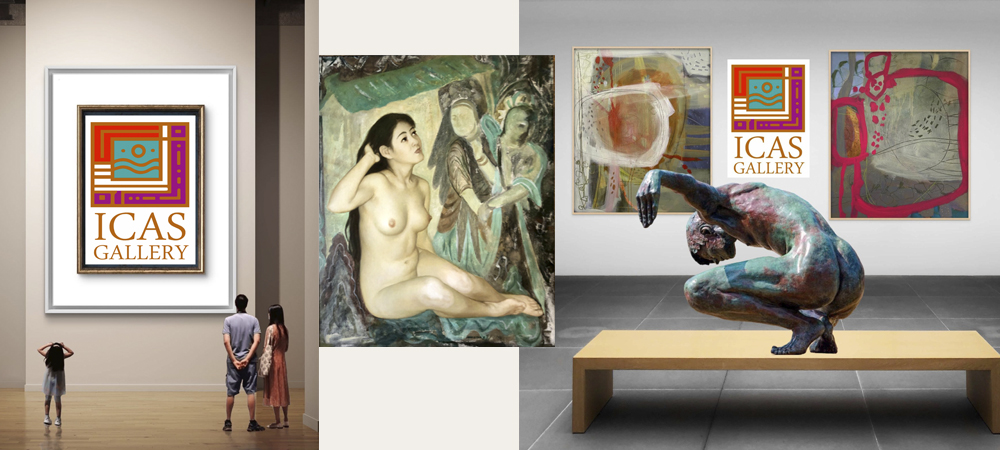The Life and Legacy of Wassily Kandinsky
Born in Moscow, Russia, 16th December 1866
In a small Russian town, a boy named Wassily Kandinsky, age 8, sat by the window, mesmerised by the colours of the sunset spilling across the horizon. Unlike other children, who saw the world in simple hues, Wassily experienced colours as living entities. The golden yellows hummed with energy, the deep blues whispered ancient secrets, and the fiery reds roared passionately. For him, colours didn’t just exist; they sang, danced, and told stories. This peculiar connection would shape his life in ways no one could predict.
Years later, Kandinsky took a sensible path—he pursued law and economics, excelling in his studies. But even as he earned respect in the academic world, the symphony of colours lingered in his heart, growing louder with time. One evening, he encountered Monet’s Haystacks, a painting that seemed to shimmer with life, unbound by strict realism. Its abstraction and emotional resonance unlocked something dormant within him. “This,” he realised, “is the language I’ve been searching for.”
MONET ‘s “Haystacks at Giverny”
I can recall my moment of discovery, an instant that mirrors Kandinsky’s awakening. Walking along the roadside after a rainstorm, I noticed petroleum mixing with water, creating an iridescent palette of purples, blues, reds, oranges, and greens. The colours shifted and changed with every movement, like they were alive, painting their own story. I couldn’t stop watching, utterly mesmerised. I was dreaming in Colour, witnessing a fleeting, magical symphony that no words could capture.
Kandinsky felt that same awe but on a grander scale. Leaving behind his law career, he moved to Munich to pursue his art studies. At first, he painted landscapes and figures, emulating the masters. Yet, these works felt constrained, their subjects locked into a physical world that no longer spoke to them. The colours in his mind demanded liberation. Slowly, he experimented—breaking apart forms, letting Colour and line dictate the narrative. His canvases transformed into symphonies, where shapes became instruments and hues sang harmonies. Instead, they believed in a synaesthesia of colours and assigned them different properties. Similarly, he used music to compose his works. He said, “Colour is the keyboard, the eyes are the hammers, the soul is the piano with its many chords. By touching this or that key, the artist is the hand that sets the soul vibrating automatically.”
Critics were baffled. “Where is the subject?” they asked, perplexed by his increasingly abstract works. But Kandinsky wasn’t deterred. He believed art could transcend the physical world, connecting directly to the soul. In 1911, he published Concerning the Spiritual in Art, a manifesto of his vision: art as a universal language of emotions. In it, he confirmed that the artist’s role was to depict reality and evoke deeper truths that lay beyond it.
His journey was not without hardship. The turbulence of war and politics disrupted his life. During World War I, he fled Germany, leaving behind the Der Blaue Reiter group he had co-founded with like-minded artists. Back in Russia, his avant-garde ideas clashed with the strictures of Soviet realism, stifling his creative freedom. Undeterred, he returned to Germany, where he joined the Bauhaus school. There, he thrived as a teacher, inspiring a new generation of artists and architects with his radical ideas.
 Yet, challenges continued to shadow him. The Nazi regime deemed his work “degenerate,” banning it from public view. Once again, Kandinsky was forced to flee. Settling in France, he spent his later years in quiet isolation. Despite this, his art continued to evolve, becoming more fluid and organic, as though searching for harmony amidst the world’s chaos.
Yet, challenges continued to shadow him. The Nazi regime deemed his work “degenerate,” banning it from public view. Once again, Kandinsky was forced to flee. Settling in France, he spent his later years in quiet isolation. Despite this, his art continued to evolve, becoming more fluid and organic, as though searching for harmony amidst the world’s chaos.
Kandinsky passed away in 1944, but his legacy forever reshaped the art world. What was once met with confusion and scepticism is now celebrated as the birth of abstraction—a revolutionary language of emotion, music, and spirituality. Kandinsky taught us that art is not merely about what we see but about what we feel.
Through his work, Kandinsky invited the world to listen to the symphony of colours and experience the profound connection between the visible and the invisible. For those who have ever been captivated by the dance of light and Colour, his journey feels like an invitation to dream, feel, and create. For Kandinsky, and perhaps us, art was never just about painting—it was about the soul finding its voice.
LINKS to REFERENCES:










